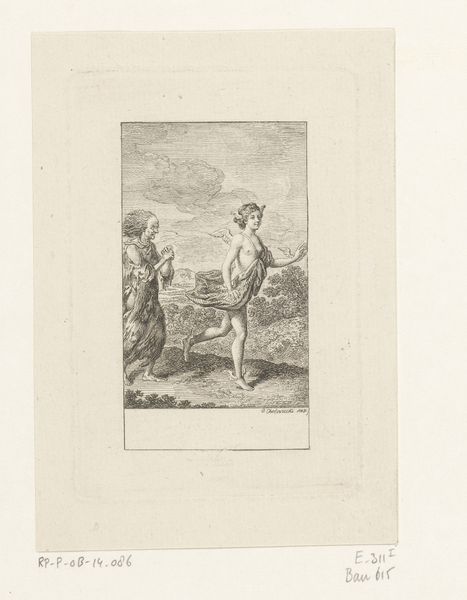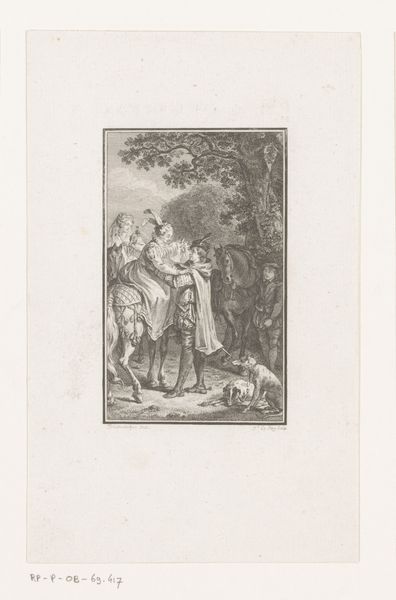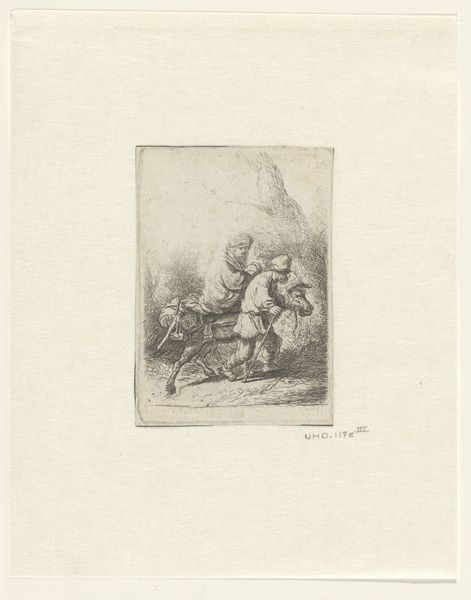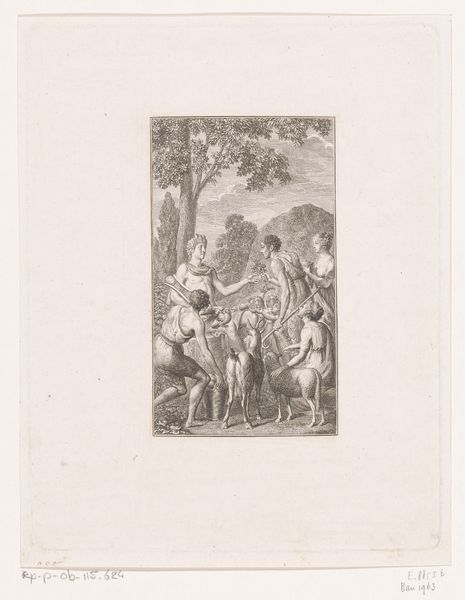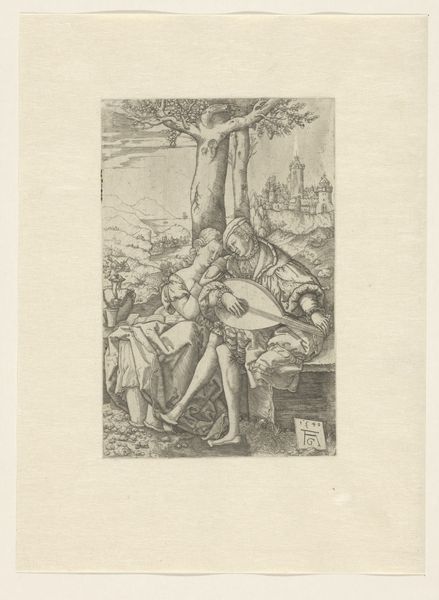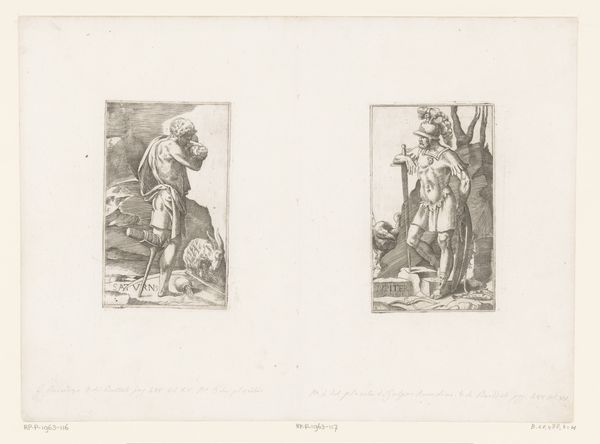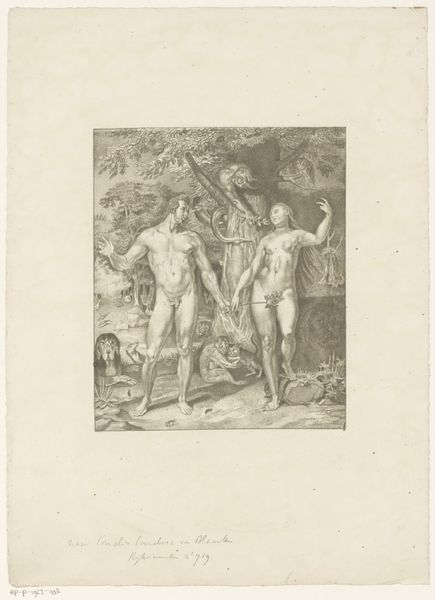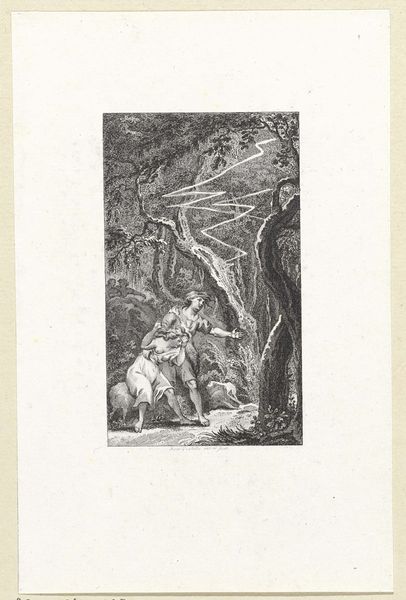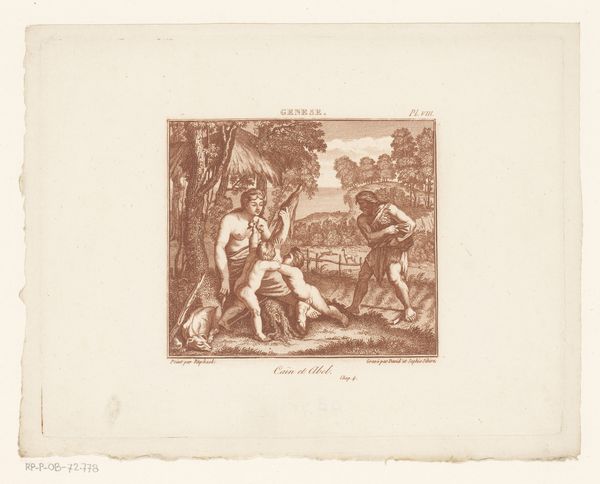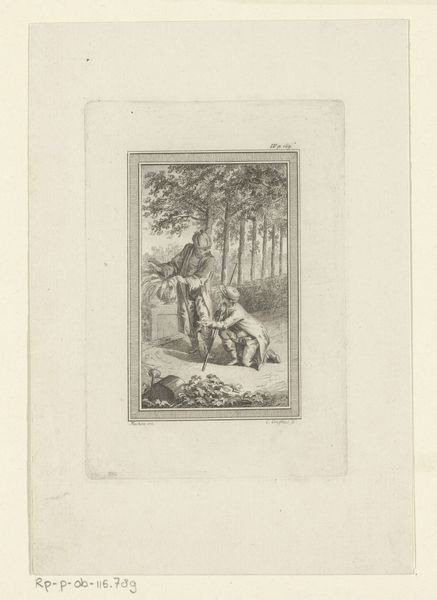
Dimensions: height 141 mm, width 97 mm
Copyright: Rijks Museum: Open Domain
Curator: Immediately, I'm struck by the dramatic tableau; such meticulous detail etched onto this relatively small plate. Editor: Yes, the etching and engraving processes employed to create Carl Leberecht Crusius' "Three Men in the Woods After a Duel" are remarkable. The contrast of light and shadow really defines the form here. Look at how the engraver has played with line density to convey depth in the wooded backdrop, while also giving visual weight to the figures. Curator: Precisely! One is prone after seemingly losing the fight, being comforted by two others. It is held in the Rijksmuseum, dated somewhere between 1755 and 1779, if I’m not mistaken. It begs questions about honor culture, aristocratic violence, and even the socio-economic structures that facilitated these encounters. Were duels commonplace, and how did artistic representations either condone or condemn such practices? Editor: Or simply record the social theater of such ritualized combats. One does wonder what grades of metal went into fashioning those swords. Beyond that, how were the prints themselves circulated and consumed? Were they aimed at a broad public, spreading sensational tales of daring do, or did they function more as keepsakes for a narrower, more privileged social bracket? Curator: Intriguing point. Did the engraver also perhaps fashion those materials he put his craftsmanship onto, from tools to etching plates? These details speak volumes about how societal frameworks are manifested in artistic form. Did Crusius perhaps see his prints as disposable products, or art intended for preservation? Editor: Given the condition of this piece and that it hangs in the Rijksmuseum, some would say he was successful in either intention. I find the enduring nature of such works speaks to a society’s values. The choices of what is collected, preserved, and displayed inevitably shapes our collective understanding of that past society, influencing norms of today. Curator: Indeed. Reflecting on this piece makes one question how institutions like the Rijksmuseum define "historical value." It reminds me that understanding materials provides such insights into social practices and meaning. Editor: Yes. Contemplating Crusius' etching allows us a layered understanding, one that intertwines not only aesthetics but also production methods and subsequent receptions of social ideas.
Comments
No comments
Be the first to comment and join the conversation on the ultimate creative platform.

